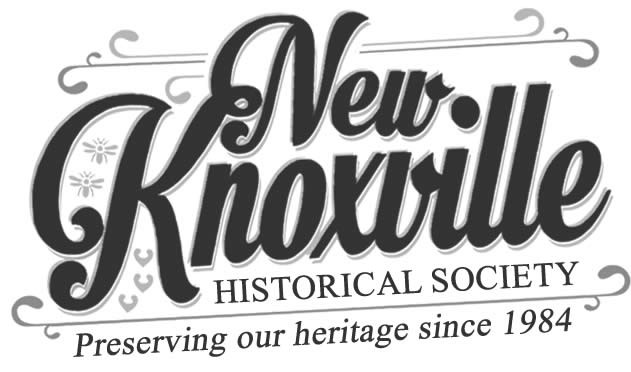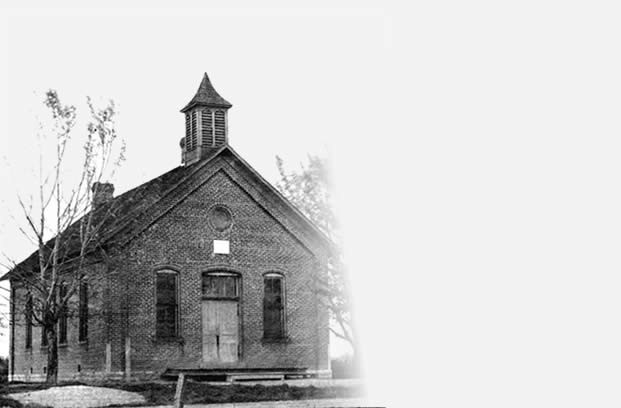Dennis Gaertner, July 2023
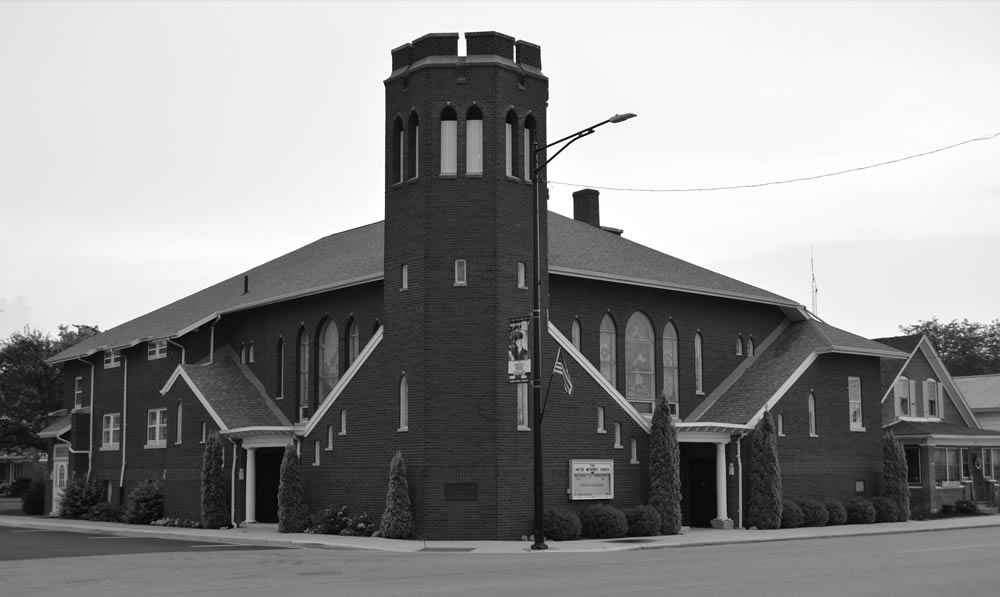
The Methodist Church of New Knoxville, Ohio
Early settlers from Europe arrived in West Central Ohio in the 1830s. They brought their religion with them, turning the first homes into scenes of family worship of God, singing, Scripture reading, prayer, and exhortation to Christian living.
By 1838 an independent church was founded in New Knoxville. Believers strengthened their faith and fellowship with small gatherings in homes, but in 1840 a log church was built for congregational worship. A constitution was adopted, stating that, “According to the confession of faith, it shall be a German United Reformed and Lutheran Church.” This church is now home to brothers and sisters in the faith and known as First Church of New Knoxville.
At the same time an evangelistic effort was reaching into West Central Ohio sponsored by the “Allen Mission.” This effort at starting Methodist-style “bands” (similar to Sunday School classes) in cities and towns was a strategy of John Wesley, the Christian reformer. The Allen Mission was later absorbed into the “Sidney Mission” and included New Knoxville, along with Sidney, Piqua, Greenville, Spencerville, Kossuth and St. Johns. In this way Methodism made its way to New Knoxville.
The singular moment which sparked this addition to the New Knoxville scene came in 1842. William Doering, a newcomer to the community, was single and carefree. His personal example of Christianity exhibited a thoughtless and disengaged attitude that focused more on pranks and jokes he could play on people around him than offering good things. Suddenly in late 1842 Doering began making the rounds in the community, apologizing to everyone for the harm he had done. In doing so, he claimed that he now had a new perspective, one that had been gained through a visit to Sidney where he heard the evangelistic preaching of a Methodist revival preacher named John Kissling.
Doering’s change of life had skeptics, including members of his own family. They determined to set him straight, but he responded by telling them to come with him to Sidney and hear for themselves this “mighty man of God.” William Kruse, Sr., Rudolph Brocksick, and William Rethwelm took him up on the offer. When they heard Kissling preach they were so impressed that they invited him to come to New Knoxville and hold services, promising that they and their families would form the first band for his instruction. The following year saw William Meckstroth and William Lutterbeck added to the class.
On May 18, 1843, the first members were received officially into this church group by the man who was now the first regular pastor, John Zwahlen. On the following day nine others were received, and the “Salems Methodist Episcopal Church” was organized in New Knoxville. The first quarterly conference of the church was held in December 1844. At this conference, C. Brookmeier was chosen as exhorter, and Henry Ney, William Lutterbeck, and J.G Zonzelmann were named as class leaders.
Elected to the Board of Stewards were Heman H. Meckstroth, Philip Pretzinger, Peter Vogel, William Doering and John Rinker. John Zwahlen, the first pastor of the church, was born on December 25, 1809, at Winterhur, Kanton Bern, Switzerland. He was raised in the Reformed Church, and at age 24 he migrated to New Orleans, and then relocated to Cincinnati. He was licensed to preach in the fall of 1837. During his ministry he served in Pennsylvania, Missouri, Indiana, New Jersey, New York, Maryland, and Ohio. He died in Evansville, IN, on August 28, 1898.
Over the years the church has occupied four different facilities, beginning with a log cabin (1843-1864). The next home was across the street in a new white-framed church building (1864-around 1899) next to the Methodist Cemetery. In the mid-1890s the 40’ by 80’ Immanuel Lutheran church facility at the corner of Main Street and German Street became available, and it was purchased for $1,005. After worshiping in this facility from about 1899 to 1916, the building was torn down and work began on the present church structure twice the size of the previous one. Ground was broken in March 1916.
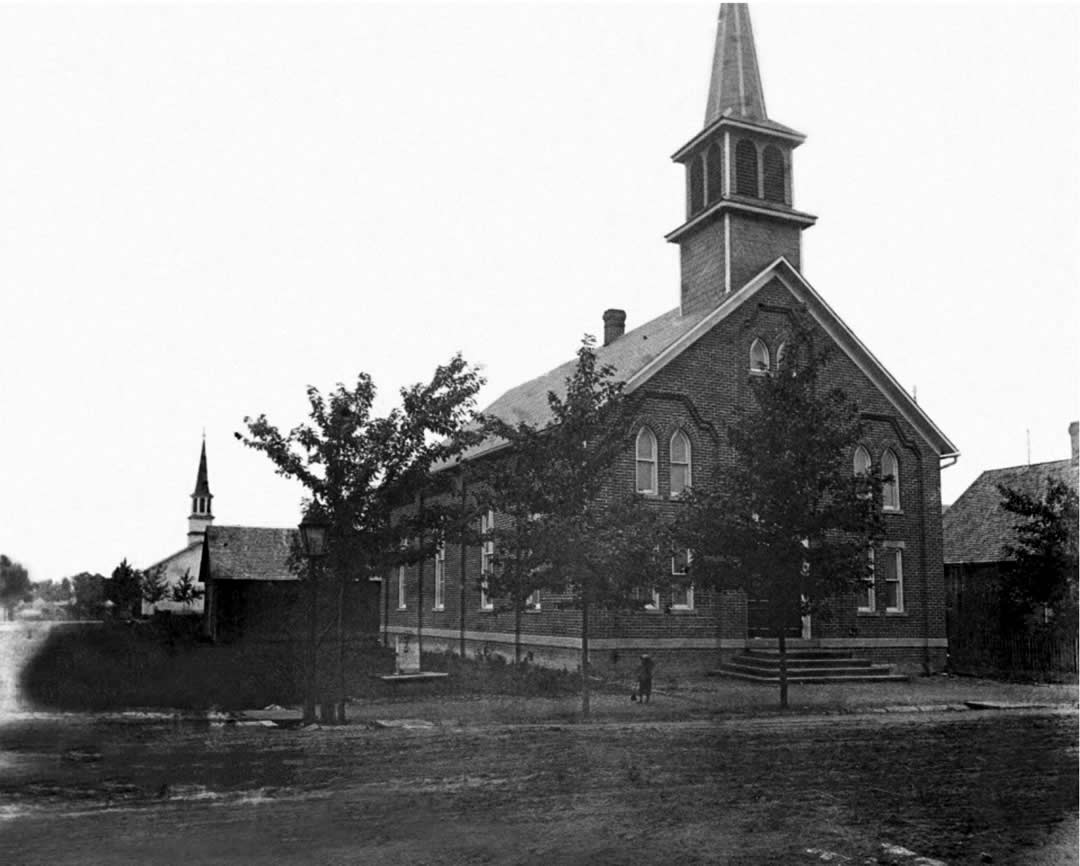
The church building in the foreground is the Immanuel Lutheran church building, which was purchased by the Methodist congregation and used by them from 1899-1916. The white frame church building which was used from 1864-1899 is visible in the background.
An architect was hired, but most of the labor was done by volunteers, day workers, and local craftsmen. The basement was dug by the trustees of the church as shown in a picture from 1916, and 27 years later the centennial celebration booklet shows that many of those men were still trustees of the church. The pastor was Rev. Paul L. Philipp, whose ministry ran from 1915 to 1923.
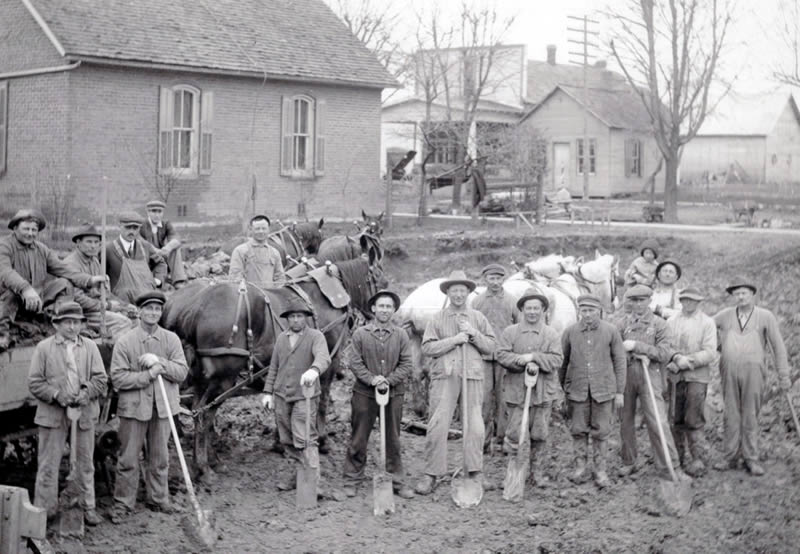
Trustees of the Methodist Congregation digging the basement for the 1917 (current) building
Front row: Chester Schultz, *Lewis Aufderhaar, *Wesley Katterheinrich, *Noah Katterheinrich, Daniel Moellenkamp, Harvey Katterheinrich, *Ben Katterheinrich, _____, _____, William Aufderhaar (Snipe), _____
Back row: August Schultz, Fred Howe, Rev. Paul Phillips, Elmer Kruse, Jake Katterheinrich, Henry Knierim, Sam Katterheinrich (Samuel Benjamin).
*Denotes those who were still trustees in 1943
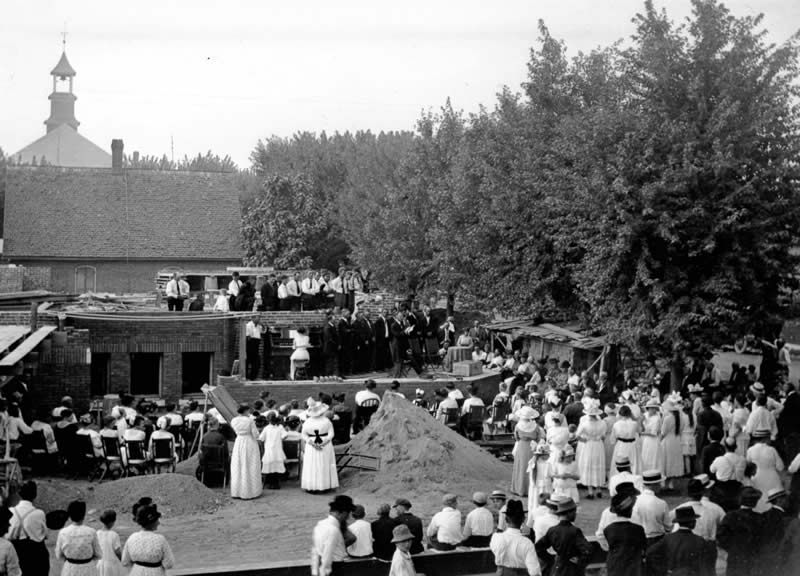
A view from the south of an outdoor worship service being conducted on the construction site of the new building in 1917 with Alice Katterheinrich Kuck playing the organ. She continued to serve as the church organist until retiring in 1985 after 70 years of service. The steeple in the background is that of the old town hall, where services were conducted after the old building was demolished on this site.
The floor plan chosen was the Akron floor plan, complete with wooden folding doors (that still function), a balcony, classrooms designated for Sunday School teaching and one large Sunday School room that could be partitioned off with large pull-down wooden doors (that still function). The sanctuary features a sloping floor in theater style, a built-in organ (that still functions), and two large stained-glass windows, one portraying Jesus praying in the Garden of Gethsemane and one depicting Jesus standing and knocking at the door.
The brick for the building was obtained from Webster Brick Company in Chillicothe, Ohio. The roof was slate and installed by a local company, H. K. & K. Roofing (now New Knoxville Supply). The trusses were supplied by New Bremen Bridge Company, and Smith Brothers of Wapakoneta did the electrical work. Much of the lumber was purchased from Hoge Lumber in New Knoxville. The stained-glass windows, numbering more than 60, were acquired from Rossbach Art Glass Company in Columbus, Ohio.
While the building was under construction, meetings were held in the old New Knoxville town hall. After the basement level was completed, church services were held on this first level while the levels above were being finished. In April 1917, before the church took occupancy, an insurance policy for $15,000 was purchased through Jacob Fritz of New Bremen, Ohio. In today’s dollars that amount would be over $362,000.
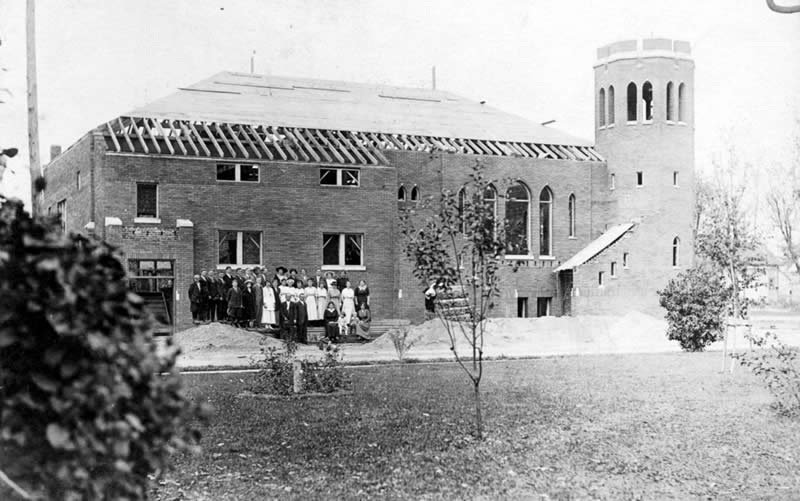
A south view of the nearly completed building in 1917
During the decades which followed the church has dealt with many challenges. The Great Depression, the world wars, technological advances, political and social unrest of certain periods have all impacted the community, but the church has continued in ministry for Jesus Christ.
The energy of the church has been evident in the past quarter century, growing in Sunday worship attendance and in its giving to various Christian causes. Support of our local ministry has increased beyond weekly worship services and Bible studies for men and women. Giving has increased for Agape Ministries, ministry in local nursing homes, the Lima food pantries and soup kitchens, joint-church Vacation Bible School, Chrysalis, Epiphany, and Emmaus Walk ministries, and funding for youth participation at Lakeside church camp. In addition, contributions increased to Midwest Mission Distribution Center, Operation New Knoxville Cares support for our service men and women, and a variety of other mission projects.
Since 1986 the church and parsonage have been modernized. A handicap-accessible elevator was installed, and the church basement was outfitted with new flooring and decorative painting. A new handicap-accessible restroom was built. New carpeting was installed in parts of the worship facility, and the church kitchen and the parsonage were extensively remodeled. Church offices were carpeted and painted. Also, the historic pipe organ was completely refurbished. These projects totaled over $200,000.
Many pastors during this period of time have contributed much to progress in the church.
- Rev. James Waugh (1980-87)
- Rev. Ruth Card (1987-1990)
- Rev. Alex Awad (1990)
- Rev. Gale Gebhart (1990-1993)
- Rev. Laurence Feaver (1993)
- Rev. Dr. Mitchell Arnold (1993-2005)
- Rev. Brian Vinson (2005-2008)
- Rev. Dr. Dennis Gaertner (2008- )
